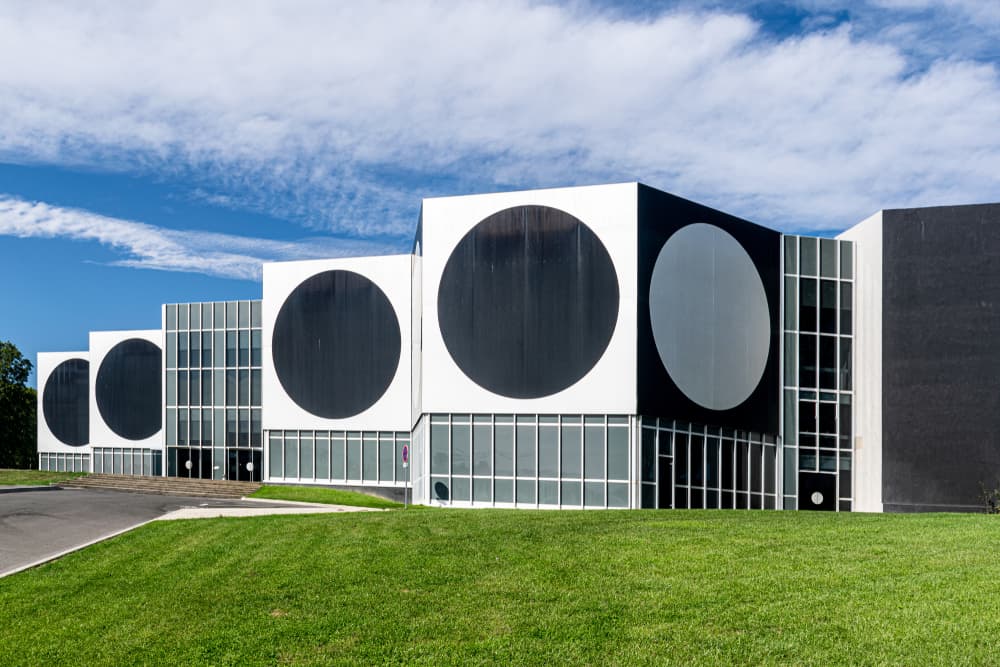

An unclassifiable artist, Győző Vásárhelyi (his Hungarian name) was born on April 9, 1906 in Pecs, then in Austria-Hungary. Naturalized French in 1961, this precursor was initially destined... to medicine. When he stopped his studies, his interest in the Bauhaus school of design gradually led him to creation with, from the beginning, a predilection for geometric abstract art and the minimal use of shapes and colors on various materials.
In 1930 he moved to France (in Arcueil) and started as a graphic designer in advertising agencies where he created Zebra (1937), the first work belonging to the op art genre. Although he continued his artistic research afterwards, he remained close to the advertising sector with, among other things, the creation of the Renault logotype and the dressing of the facade of the RTL’s radio studios (today classified as historical monuments).
In the 1960s and 1970s, the artist is a key figure of art when the city of Aix-en-Provence asked him to design a large laboratory for research, discovery and creation. True to his avant-garde approach, Vasarely applied his obsessions to architecture: optical illusions, colors, metaphysics... A project so atypical that it does not belong to any architectural trend, only the choice of materials (glass, anodized aluminum) and its overall aesthetic allow it to be associated with the 1970s.
Inaugurated in 1976, the building is a remarkable example of synthesis between architecture and plastic arts.
Intended to be a place of sharing and experimentation, it was conceived by Victor Vasarely as a monumental lumino-kinetic sculpture composed of:
From Cézanne to Vasarely: we will be worthy.
This is the mysterious message that the artist placed in the foundations of the building when the first stones were laid in December 1973. If he accepted this project with its many technical difficulties, it was indeed in part out of his admiration for Cézanne, the pope of modern art who had lived in Jas de Bouffan where the Foundation was born. Built in large part with the help of local businesses, favored by Victor Vasarely and his team, it was inaugurated on February 14, 1976 in the presence of Madame Claude Pompidou.
Since then, thousands of visitors have been taken in by the artist who gradually invites them to discover colors, materials and optical and kinetic games. His objectives: to stimulate their participation by destabilizing them, this large space saturated with colors and with the limits unceasingly questioned inviting them to lose themselves in a global aesthetic experience.
To enjoy this immersion in modern art, go to this site.
Valerie from Comme des Français
----
Discover other world-famous French artists